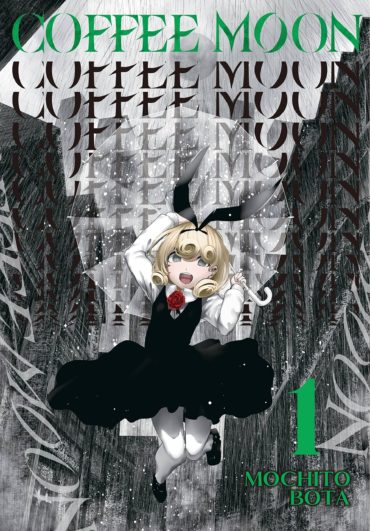Coffee Moon Volume 1 Review
In the film Groundhog Day, Bill Murray’s character uses the fact he is trapped in a time loop to ultimately improve his life and those around him to help break his cycle. In Coffee Moon, it seems our heroine’s attempts to improve things in the time loop she is trapped in may not always be improvements.
An art student called Pieta has been living her 16th birthday 1,033 times now, and has appeared to have gotten into the habit of living that day in the exact same way every time. She is used to attending her first day at school, umbrella in hand to protect her from the black rain that is constantly falling outside. However, her friend Danae is also stuck in the same loop, hates it, and desperately wants to find a way to escape it.
Danae first gets Pieta to try to do things that she hasn’t done. This includes visiting an expensive department store, buying clothes, visiting a roof-top amusement park, and then breaking into a museum late at night. They are caught by the guardian of the museum, who happens to be another of their classmates, but before anything truly awful happens to them, the clock strikes midnight and the loop restarts.
In the next loop, they attempt to befriend the girl at the museum. This girl is Chiaro, the daughter of a hated high-profile politician whose life is constantly under threat by a group of extremists. She does decide to become friendly with Pieta and Danae, when they see the violence that Chiaro has become used to. This difference to Pieta’s day causes another problem when this new relationship threatens both of their lives.
While the idea of time loops is nothing new in the world of manga, it is interesting to see a lead character, who begins the story at least, to be happy with their lot and content with playing the same day over a thousand times. The fact that she has not made any attempt to change her routine means that those around her appear to be safe, even if they too are trapped in the loop unwillingly. It is only once those around Pieta encourage her to break the cycle that things become dangerous for her. Thus, it makes for some interesting story-telling from Mochito Bota. The artwork is also good, from the miserable, rainy setting to the character design. A scene in which Pieta and Danae go shopping gives the creator the chance to draw the characters in a Lolita fashion (Danae in a goth look, Pieta in a sweeter design). Having said that, a point where Chiaro talks about having to spend her vast wealth on things to protect her life leads to her saying: “It’s enough to make a girl sick of shopping”, which does sound a little bit old-school sexist, as if shopping is the main thing girls care about.
As for the manga’s production, Ko Ransom’s translation appears to have no major issues worth bringing up, and Philip Christie’s lettering is all good. Nothing stands out regarding the two, but there are no problems either. The manga also comes with a few short bonus pages, giving some extra humour to what is a mostly dramatic manga.
This volume ends on a cliff-hanger moment with lives in danger, and given the mysterious nature of the story, it should be worth looking into more.
Our review copy from Yen Press was supplied by Diamond Book Distributors UK.


